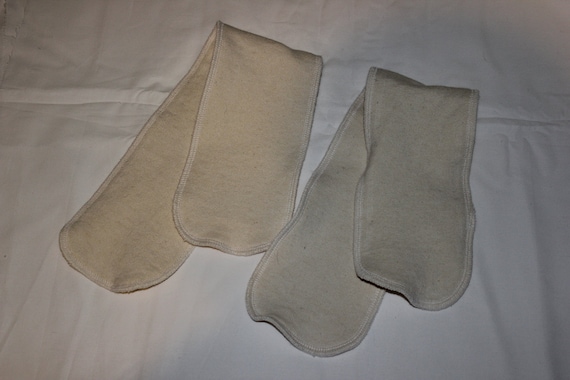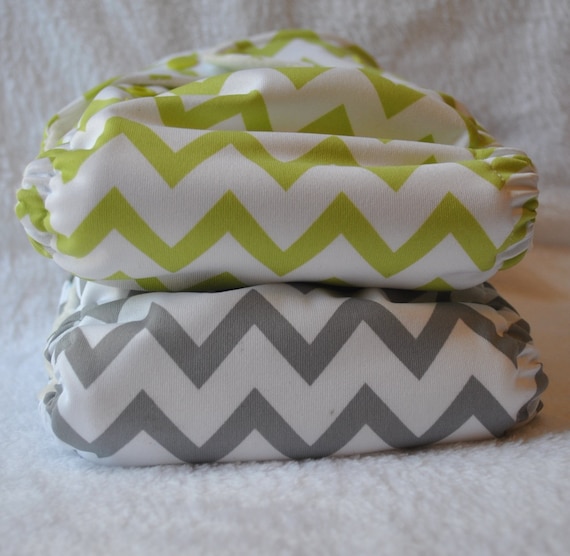When I was just starting out with cloth diapers wicking was something I'd never heard of and didn't learn what it was until we were about done diapering our second child! I guess that's a good thing since wicking can be a huge problem for some.
What is wicking? Wicking is when moisture from inside the diaper transfers to the outside or front side of the diaper. Usually around the legs and back area. It normally starts as a damp area that spreads across the outer layer of the diaper. You may think your diaper is leaking, or you PUL is bad and letting wetness out or that your wool isn't fitting well or needs lanolized. Often none of these are the case.
What causes wicking? There are a few things that can lead to wicking. Probably the most common is build-up in your inserts or prefolds. After repeated washings detergent can build-up in the fibers of your soakers and cause them to repel moisture and absorb more slowly and not hold as much. Usually your diapers would start to have an odor when in contact with urine if this is what's going on. I've read that hard water, front loaders and microfiber inserts are more likely to cause this. This isn't something you'll need to worry about with brand new diapers/inserts but after a few months of use or if you've bought used you may want to strip them for best results. To get rid of the build-up you'll need to strip your diapers. There are many ways to do this, from boiling prefolds or inserts, to washing with no detergent on hottest setting several times, or using vinegar or Dawn dish detergent or bleach. Build-up doesn't mean your diapers are shot, they just need some regular maintenance. Here's a great post about stripping your diapers: http://etsyclothdiaperteam.blogspot.com/2012/12/stinky-diapers.html
Another possible cause of wicking is not enough absorbency in your diaper. This can cause moisture to pool around the seams or leg openings if there is no where for it to go or nothing to soak it up. Again, can be caused by build-up reducing your absorbency. Or you may need to add some additional layers. If you find yourself changing your little one abnormally frequently and it seems heavy, then you probably have a heavy wetter. Try adding something like a hemp or bamboo doubler to increase the absorbency while adding minimal thickness. If you use prefolds, maybe layer another prefold inside or go up a size. You can also add a lay in doubler like these too. Another tell-tale sign that wicking is caused by a heavy wetter is that when your little one pees for the first time in a fresh diaper, it leaks around the sides of the leg openings like they are peeing so much at once the inserts can't catch it all that quick!

Sometimes diapers or covers with a cotton layer on the outside can wick around the leg and back seams where the cotton layer is inside the seam. This can usually be remedied by sealing the diaper before your first or next use by washing and drying the shell in hot water and hot dry first. Always check with the maker first though. A hot wash and dry will act to shrink the holes made from sewing and seal them to the thread reducing the chance moisture will wick through the seam to the cotton layer. Another step is to make sure you are using enough absorbency, as with any diaper, to hold the liquid so it's not pooling around the seams inside the diaper or getting squished out when your child sits down. Any saturated diaper is prone to wicking or leaking, but with cotton print outer you can notice it sooner since the cotton will absorb any moisture sitting in the seams or leg/back openings and carry it around to the front of the diaper. It does happen with PUL too, but not as quickly since PUL isn't absorbent. You can also look for a cotton print diaper that has PUL only around the legs for extra security, but you'll still need to use enough soakers.
If you have tried all of the above or are confident that none of these are your problems then you could be getting a poor fit from your diapers. If the elastics are lax, or you are not able to fasten them snug enough(but not too tight!) this could also lead to wicking or just plain leaking around the legs, belly or back. Always make sure to follow the care instructions for your diapers as harsh detergents or bleach can damage your elastic or delaminate your PUL and cause problems.
Hopefully this will help you troubleshoot your wicking issues and good luck!

No comments:
Post a Comment